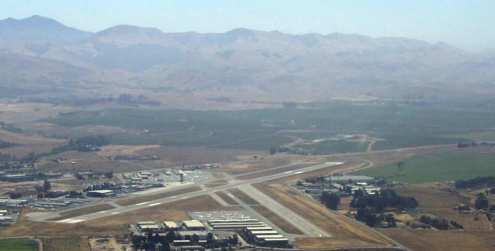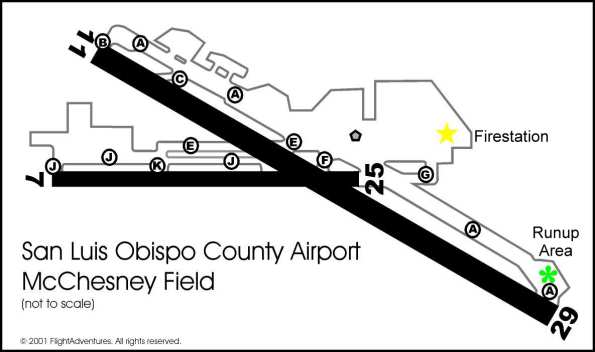|
|
Air Traffic Control (ATC) for Simulator Pilots |
The four key elements for broadcasting your transmissions correctly are as follows:
When a Controller gives you instructions, instead of replying with the "roger" or "wilco" typically used in the sim world, you should repeat all clearances followed by your aircraft ID. For example:
You: Extend downwind, 955. To better help pilots, I have put together the following walkthrough, which includes all radio transmissions that are typically made from engine start to engine shutdown at KSBP. ATIS: Automated Terminal Information Service. It provides pilots at a Towered airport such as San Luis Obispo with valid time, wind direction, sky condition, temperature, dewpoint, altimeter setting, current runway in use, and important NOTAMs, if any. Each ATIS recording (usually updated about once an hour) is given an ID such as Alpha, Bravo, Charlie, etc (see Phonetic Alphabet). To be a safe pilot, you will need to get the current ATIS information before flying. Once ATIS is received, you'll call Ground Control. In the following example we'll have ATIS information Charlie. GROUND CONTROL: You call "ground" anytime you want to taxi on the airport. This includes whenever you leave the runway. As you'll see, once we're off the runway, we'll call Ground Control again. We're going to assume that we have just started the aircraft engine and have received ATIS information Charlie. We are currently parked at the Firestation (see San Luis Obispo Airport Map). Our initial call to ground is to get permission to taxi from our current position to the active runway. The call should go like this: "San Luis Ground, Cherokee 41955 at the firestation with Charlie." (Notice that we began with Who we're calling, Who we are, our Location, followed by our Request.) You can expect a variety of answers from ATC such as Taxi Runway 29, Hold short runway 25, or follow traffic to runway 29. For this example we're going to have ATC issue instructions to taxi to Runway 29:
You: Taxi runway 29, 955. From this point, we have been cleared to taxi from our current position to the end of runway 29; assuming we can taxi on the centerline, we should make it there in one piece. TOWER: Once reaching the end of the active runway (which in this case is 29), we'd complete what's called an engine run-up procedure. Here pilots test their engine, instruments, and flight controls to make sure that any problems can be caught while still on the ground. Upon completion of this task we're ready to take to the skies. Supposing we're in the runup area at the end of runway 29 at SBP. Here's the call:
The tower can issue a variety of options, including cleared for takeoff, taxi into position and hold, or Hold short. In any case, readback of your clearance is always mandatory. For this example there's no traffic inbound on short final and we're number one for departure:
You: Left closed traffic, cleared for takeoff, 955. If traffic is not a factor, you shouldn't have to communicate with ATC until you are downwind abeam the tower (which means on your downwind leg and the tower is directly off the left of your wingtip, assuming left traffic). At this point we need to call the tower to let them know what we want to do. Since this is a short walkthrough, we're just going to skip ahead a bit and land. The call should be like this:
Tower: Cherokee 955, San Luis tower, runway 29 cleared to land. You: Cleared to land, 955. Once on the runway, and assuming the tower isn't too busy, we will be advised to contact ground once off the runway. Take a right or left at the first practical taxiway we can make safely, and stop once we're past the yellow hold short lines. Ground Control: After completing our After Landing Checklist, we need to get the airplane back to parking. Since we're off the runway, we need to contact ground again:
Ground: Cherokee 41955, San Luis Ground, taxi to the firestation. You: Taxi to the firestation, 955. Once we've reached our destination it's time to shut down, gather our gear and walk back to the VPC to share our flight experiences with the other pilots! I hope this helps. If you have any questions, feel free to contact me at: dylank@crew.flightadventures.com
(Editor's Note: For more information, check out the Radio Communications Phraseology and Techniques section in our online FAA Publications.
|

![[Next]](../buttonNextI.jpg)



